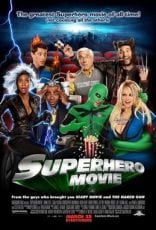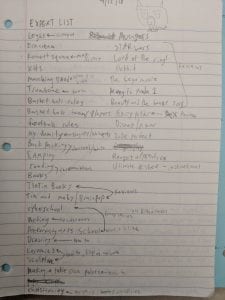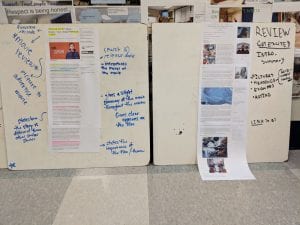Signs: An Underrated Classic
Signs: An Underrated Classic
*SPOILER ALERT*
Believe it or not, I think it is safe to say that I have seen the movie Signs at least 15 times in the past two years. Many people believe the movie is unrealistic and exaggerated, but I think that the acting and emotion is raw.
What is it about?
Graham Hess is a retired reverend that lives with his brother (Merrill) and his two kids (Morgan and Bo) on a farm in Bucks County, PA. Graham’s wife passed away six months ago, making him lose his faith in God. The entire family has little issues of their own; Merrill is an ex-minor league baseball player, Morgan has very bad asthma, and Bo never finishes her water, but leaves her half-full glasses all over the house. One day out in the cornfield, Graham and Merrill go to get the kids and see that massive crop circles have been made on their land so Graham calls the local sheriff to investigate. The sheriff tells him that she does not know what has been going on, but it might be related to the fact that animals all over town have been getting increasingly violent. They hear reports of crop circles appearing all over the world and UFO sightings in Mexico. That night, Graham and Merrill hear noises outside and go outside to find it, but lose it in the corn. Morgan and Bo get invested in the idea of aliens and are obsessed with extraterrestrial life. They hear more noises that night, but Graham becomes more of a believer when he sees a thin, green leg sticking out from the corn. That night, Graham and Merrill discuss their views on miracles. Merrill says that he is a “miracle man”, but Graham reveals that he is not. When they get to the basement due to the attack, Graham remember that the house has a coal shoot in it. Right as he remembers, an alien grabs Morgan but, Merrill saves him. Morgan goes into a nearly fatal asthma attack, but eventually is stable enough to breathe on his own. The next morning, they move back upstairs when everything seems clear. While Graham goes to get the TV for Morgan, an alien grabs Morgan and the family stands there in shock. Throughout the movie, Graham has flashbacks of talking to his wife after her accident. He remembers that her last words were from a random memory telling Merrill to “swing away”. Graham says this to Merrill and he grabs his prize winning baseball bat hanging on the wall and hits the alien as hard as he can. After the first hit, the alien starts injecting poison gas into Morgan’s lungs. With another hit, the alien drops Morgan and Graham picks him up to give him his medicine. The alien falls on the ground and one of Bo’s glasses of water falls on it and burns its skin. Merrill pours water on the alien and it dies. They all walk out to the backyard and Morgan wakes up, breathing fine. The last scene of the movie flashes forward to a month or two after the event and it shows Graham putting his reverend clothing on.
Who is in it and when is it from?
Director- M. Night Shyamalan
Graham Hess- Mel Gibson
Merrill- Joaquin Phoenix
Morgan- Rory Culkin
Bo- Abigail Breslin
The film was released in the summer of 2002. It made a whopping 60 million dollars opening weekend and was #1 in the box office for a few weeks.
Why do you like it?
I feel that Signs is a very underrated film because of the effort the director had to connect the entire film together. When I watched this movie for the first time, the ending had my mind blown. All the families issues are important to the outcome. Graham stated in the middle of the film that he thought that things just happened for a reason and nothing was a “sign”. The signs are intertwined throughout the film without the audience even knowing. Merrill did not play baseball anymore because he always struck out. He struck out so much because he would swing as hard as he could every time. That is why he was able to exhaust the alien. Morgan had very bad asthma, yet he survived the poison gas. He survived because his lungs were still closed from the asthma attack he had hours earlier. Bo never drank her water, but left her glasses all over the house. Water ended up being the aliens weakness and when it fell over after Merrill’s hit, the water poured all over it. All of these signs throughout the movie connect so well that it captures my interest every time I watch it. At the end of the film it flashes back to all of the signs and Graham realizes that things do happen for a reason and miracles are real. This revelation makes him go back to being a Reverend. I feel that this movie joins all components of film like lighting, camera angles, plot, dialogue, etc. and the outcome is emotional and powerful.

 Sometimes in life, you’ll have a crappy day. Maybe someone keys your car, maybe you get to work late, or maybe you get an accidental vasectomy after learning your wife died at Thanksgiving dinner. Regardless of what makes a bad day, there is one movie that can turn your day around.
Sometimes in life, you’ll have a crappy day. Maybe someone keys your car, maybe you get to work late, or maybe you get an accidental vasectomy after learning your wife died at Thanksgiving dinner. Regardless of what makes a bad day, there is one movie that can turn your day around. 





